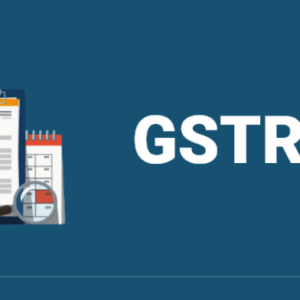Description
Filing of LUT in GST for Exporters
Are you an exporter looking to simplify your business operations? The GST LUT Form is an essential document that enables you to seamlessly conduct your export transactions without paying Integrated Goods and Services Tax (IGST) at the time of supply. Legal Spirit is here to assist you in efficiently completing the GST LUT Form filing process, making your export journey smoother than ever.
Understanding LUT in GST
LUT full form is Letter of Undertaking holds significant relevance within the context of the Goods and Services Tax (GST) framework. This document serves as a powerful tool for exporters, allowing them to engage in the export of goods or services without the obligation of immediate tax payment.
GST LUT Form for Exporters
For all registered taxpayers engaged in the export of goods or services, it is mandatory to provide a Letter of Undertaking (LUT) using the Form GST RFD-11 form on the GST portal. This obligation is essential to facilitate exports without paying Integrated Goods and Services Tax (IGST).
Eligibility Criteria for LUT registration
The Eligibility criteria to obtain a LUT certificate include the following:
The Letter of Undertaking (LUT) is open for utilization by any registered taxpayer engaged in exporting goods and services. However, individuals facing prosecution for tax evasion exceeding Rs. 250 lakh or more are ineligible to benefit from this option.
- Intent to Supply: The applicant should intend to supply goods or services within India, to foreign countries, or to Special Economic Zones (SEZs).
- GST Registration: The entity seeking to avail the benefits of an LUT should be registered under the GST framework.
- Tax-Free Supply: The desire to supply goods without the imposition of integrated tax is an essential requirement for LUT application.
Exploring the LUT Bond
LUT in GST holds a validity of one year, necessitating the submission of a fresh LUT for each subsequent financial year. Should the terms outlined in the LUT fail to be met within the designated timeframe; the privileges associated with it will be withdrawn, prompting the need for the exporter to provide bonds.
For other assessments, bonds are required when conducting exports without Integrated Goods and Services Tax (IGST) payment. LUTs and bonds are applicable in the following cases:
- Zero-rated supply to SEZ: Exporting to Special Economic Zones (SEZs) without IGST payment.
- Goods Export: Exporting goods to a country beyond India without IGST payment.
- Service Export: Providing services to clients in foreign countries without IGST payment.
Documents required for GST LUT registration
To apply for a Letter of Undertaking (LUT) under GST, you’ll need the following documents:
- LUT Cover Letter: A request letter signed by an authorized person.
- Eligibility: Ensure you meet eligibility criteria (no serious tax evasion cases).
- Copy of GST Registration: Proof of your GST registration.
- PAN Card of Entity: Identification using PAN card.
- KYC of Authorized Person: ID and address proof of authorized person.
- GST RFD 11 Form: Application form for LUT.
- Copy of IEC Code: If involved in exports.
- Canceled Cheque: From your associated bank account.
- Authorized Letter: Granting power to the authorized signatory.
Advantages of Filing LUT for Exporters
Choosing to file a Letter of Undertaking (LUT) brings a host of benefits to exporters, streamlining their export activities and optimizing their financial operations:
- Tax-Free Export: Opting for the LUT certificate enables exporters to carry out their export transactions without the burden of immediate tax payment. This contrasts the alternative, where taxes are paid and later claimed as refunds for zero-rated exports.
- Simplified Process: By utilizing the LUT certificate, exporters avoid the complexities of claiming tax refunds or engaging in follow-ups with the tax authorities. This translates to substantial time savings and operational ease.
- Unblocked Working Capital: Funds that would have otherwise been locked as tax payments remain accessible for exporters. This is especially vital for small and medium-sized enterprises (SMEs) grappling with financing and working capital constraints.
- Liberated Resources: Regular exporters find a consistent advantage with the LUT certificate. Once filed, the LUT remains valid for the entire financial year. This longevity minimizes the need for repetitive filings, allowing exporters to focus on their core activities.
By leveraging the benefits of the LUT certificate, exporters can navigate the realm of international trade with greater efficiency and flexibility.
Key Reminders about LUT Bond in GST
Here are some crucial points to keep in mind regarding LUT in GST:
- Validity Period: An LUT remains valid for a year, starting from the submission date.
- Conditional Acceptance: The acceptance of an LUT comes with specific terms. Failing to meet these conditions might lead to privilege revocation. In such cases, an entity may need to provide a bond.
- Alternative Bonding: Entities ineligible for LUT registration can still furnish a bond. This bond, usually on non-judicial stamp paper, requires a bank guarantee. The adhesive should cover the anticipated tax liability based on exporter assessment.
- Official Letterhead: LUT submissions must be on the registered entity’s letterhead. This letterhead is from the entity planning to supply goods/services without integrated tax payment.
- Prescribed Form: An LUT must be applied through the official GST RFD-11 form. This form can be submitted by authorized personnel like the MD, company secretary, or partners in a firm.
- Flexible Filing: In the case of a company, the form can be submitted by a partner in a partnership firm or the proprietor.
- Bank Guarantee Limit: The accompanying bank guarantee should be at most 15% of the bond amount. The jurisdictional GST Commissioner might waive this requirement.
Staying mindful of these details helps ensure a smooth process while dealing with LUT bonds under GST regulations.
Simplify LUT Form Filing with Legal Spirit
Navigating the complexities of LUT (Letter of Undertaking) filing for exporters has always been challenging. At Legal Spirit, we specialize in streamlining the process, allowing you to focus on expanding your export operations. Our experienced professionals understand the nuances of GST regulations and are well-equipped to guide you through the seamless submission of the GST RFD-11 form. We offer end-to-end support, from document preparation to online submission, ensuring accuracy and compliance at every step. With Legal Spirit by your side, you can unlock the benefits of tax-free exports without the hassle of navigating complex procedures. Simplify your filing of LUT in GST today and begin a smoother export journey with us.
Contact us to experience a hassle-free GST LUT filing process that empowers your export ventures like never before.
RELATED GUIDES
- GST LUT Form: A Comprehensive Guide for Exporters
- IGST – Integrated Tax under GST
- Importer Exporter Code (IEC)





What should be filed in the letter of undertaking?
Is it mandatory to record them manually approved LUT in online records?
Who has to sign the LUT application?
How would I know that the process of furnishing the LUT has been completed?
Is it possible to view the LUT application after filing?
Is it mandatory to file GST LUT?
What happens when the exporter fails to furnish the LUT?
Who is eligible to furnish LUT under GST?
Who is not eligible to furnish under GST?
What documents are required for GST LUT filing?
What if the LUT is not furnished on time?
What is Form RFD 11?
What is LUT full form?